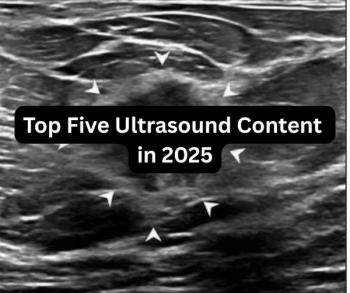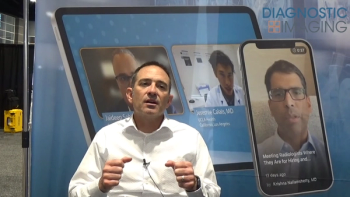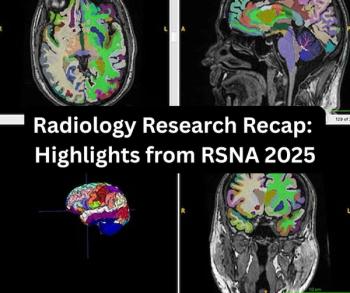
GE extends MR research collaboration with Mayo
GE Healthcare unveiled at the International Society for Magnetic Resonance in Medicine meeting a research collaboration with the Mayo Clinic focused specifically on extending 3T clinical techniques into the body. Development will focus on imaging and spectroscopy of the breast, heart and coronaries, liver, and prostate.
GE Healthcare unveiled at the International Society for Magnetic Resonance in Medicine meeting a research collaboration with the Mayo Clinic focused specifically on extending 3T clinical techniques into the body. Development will focus on imaging and spectroscopy of the breast, heart and coronaries, liver, and prostate.
The value of 3T has already been proven for neuro and musculoskeletal work, but it lags behind in body applications, according to Dr. Kimberly K. Amrami, point person for the newly extended research project and chair of body MRI in the radiology department at the Mayo Clinic in Rochester, MN.
"We will focus on making 3T body MR as good as it can be for clinical practice," she said.
The GE mission in this collaboration, according to John Chiminski, vice president and general manager for global MR, is making sure advanced technology gets into clinical practice.
"Our entire strategy is to drive enabling technologies that are needed to improve clinical outcome," he said.
Mayo worked with GE on its Vibrant breast protocol for 1.5T, reaping the early benefits for its own patients but helping the company evolve the application for general use. Amrami hopes to do the same for body studies at 3T.
In the breast, GE and Mayo scientists hope to improve resolution to identify smaller lesions, speed exams, and tap into the spectroscopic signature of 3T's improved signal-to-noise ratio. Parallel imaging techniques are expected to do the heavy lifting for cardiac 3T. In the liver and prostate, Amrami plans to leverage both imaging and spectroscopy at 3T.
"But we're not looking to turn this into a science fair project," she said. "We want to develop meaningful clinical improvements."
At present, breast acquisitions take as long as a minute for each breast. They have to go faster without sacrificing spatial resolution, Amrami said. The means for doing so may be found partly in coil technology in development at GE. Under the research agreement announced at the ISMRM meeting, GE will keep Mayo up to date on the latest hardware and pulse sequences.
Amrami and her colleagues will be working with delayed perfusion to capture evidence of myocardial infarcts, leveraging the improved SNR possible at 3T and parallel imaging to acquire data faster and eliminate motion artifact.
In the liver, Amrami hopes to use 3T to construct a comprehensive MR exam, one whose improved spatial resolution will visualize smaller tumors than can be seen at 1.5T, while acquiring functional data using perfusion and diffusion-weighted imaging.
The Mayo Clinic has already shown that 3T of the prostate can change clinical approach in its ability to visualize an accessory blood vessel serving the penis, a vessel present in up to 20% of patients undergoing prostate interventions but not easily seen on 1.5T. This blood vessel must remain intact to protect sexual function, Amrami said. Already, the use of 3T at Mayo has changed the preoperative planning in a number of cases.
"The clinicians love it and want us to do all preop prostates on 3T," she said.
Future work at Mayo will refine this imaging to provide preoperative guidance by increasing spatial resolution while developing spectroscopy to help identify small malignant lesions in the prostate, a capability that will grow in importance with the development of minimally invasive techniques using various ablative technologies.
GE will provide engineering and medical physics aid to augment resources deployed to support an already existing MR collaboration with Mayo, which has served for some 20 years as a luminary site for MR development. Expanding into body applications with Amrami at the helm makes sense, given that she has one of the largest body MR practices in the world and has been a strong advocate of body MR at 3T for the past half-dozen years, according to Chiminski.
"Her expertise in this will help us break through some of the clinical barriers to making 3T a premium clinical scanner," he said. "The solutions are right around the corner."
When the goals of this current project are met, the larger collaboration will continue, Chiminski said. The direction will change accordingly.
Newsletter
Stay at the forefront of radiology with the Diagnostic Imaging newsletter, delivering the latest news, clinical insights, and imaging advancements for today’s radiologists.




























